
Diddy Kong Racing is a 1997 racing video game developed and published by Rare for the Nintendo 64. The game is set on Timber's Island and revolves around Diddy Kong and his friends' attempt to defeat the intergalactic antagonist, a wizarding pig named Wizpig, through winning a series of races. The player can take control of any of the featured characters throughout the game. Diddy Kong Racing features five worlds with four racetracks each, and the ability to drive a car, hovercraft, or pilot an aeroplane. Timber Island is loosely based on the geographical landscapes of the United States.
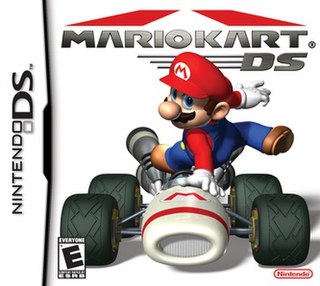
Mario Kart DS is a 2005 kart racing video game developed by Nintendo EAD Group No. 1 and published by Nintendo for the Nintendo DS handheld game console. It was released in November 2005 in North America, Europe, and Australia, and on December 8, 2005, in Japan. The game was re-released for the Wii U's Virtual Console in North America and PAL regions in April 2015 and in Japan in May 2016.

Homies are a series of two-inch plastic collectible figurines representing various Chicano Mexican American characters. The line of toys was created by David Gonzales and based on a comic strip that Gonzales created featuring a cast of characters from his youth. Introduced in the year 1998, Homies were initially sold in grocery store vending machines and have become a highly collectible item, and have spawned many imitation toys.

Fullmetal Alchemist: Dual Sympathy is a video game for the Nintendo DS. The game was released in Japan on July 21, 2005, two days before the first Fullmetal Alchemist movie came out, and was accompanied by a PlayStation 2 release of Fullmetal Alchemist 3: The Girl Who Succeeded God. Dual Sympathy was announced by Destineer on September 12, 2006, for release in North America during 2006. It had gone gold on November 27 and was released on December 12, 2006.
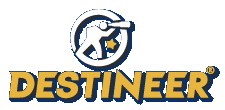
Destineer, Inc. was an American umbrella company covering a holding company, a video game publisher, and video game developer based in Minnetonka, Minnesota. The company was founded by Peter Tamte, former executive vice-president of Bungie, in 2001. It developed some original titles and also ported games from Windows to Macs under a number of different brands, including MacSoft and Bold Games.
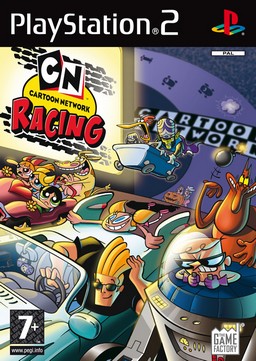
Cartoon Network Racing is a racing video game developed by Eutechnyx for PlayStation 2 and Firebrand Games for Nintendo DS, published by Danish video game developer The Game Factory, and released on December 4, 2006, in North America, and on February 9, 2007, in Europe. The gameplay is similar to Nintendo's 2003 game Mario Kart: Double Dash, but the characters and racetracks are all from six of Cartoon Network's original animated television series: Courage the Cowardly Dog, Cow and Chicken, Dexter's Laboratory, I Am Weasel, Johnny Bravo, and The Powerpuff Girls.

Dementium: The Ward is a survival horror first-person shooter game developed by Renegade Kid for the Nintendo DS. The game was released in North America on October 31, 2007, published by Gamecock Media Group. After Renegade Kid gained back the rights to the title, an enhanced version of the game was announced under the title of Dementium Remastered for the Nintendo 3DS. The remastered version was released in North America on December 3, 2015, and Europe on February 11, 2016.

Mario Kart Wii is a 2008 kart racing game developed and published by Nintendo for the Wii. It is the sixth installment in the Mario Kart series, and was released in April 2008. Like its previous installments, Mario Kart Wii incorporates playable characters from the Mario series, who participate in races on 32 different race tracks using specialized items to hinder opponents or gain advantages. The game features multiple single-player and multiplayer game modes including two to four person split screen. Online multiplayer was supported until the discontinuation of Nintendo Wi-Fi Connection in May 2014. Mario Kart Wii uses the Wii Remote's motion-controls to provide intuitive and conventional steering controls. Each copy of the game was bundled with the Wii Wheel accessory to augment this feature and mimic a steering wheel.
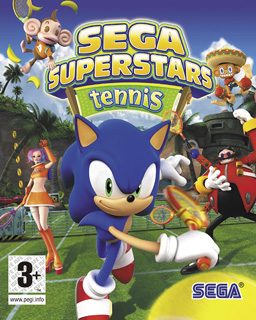
Sega Superstars Tennis is a sports video game developed by Sumo Digital and published by Sega. It is the second title in the Sega All-Stars series, preceded by Sega Superstars (2005), and crosses over characters, locations, and soundtracks from several Sega franchises, including Sonic the Hedgehog, Space Channel 5, and Super Monkey Ball.

MySims Kingdom is a video game developed by EA Redwood Shores and published by Electronic Arts as a spin-off to Maxis' The Sims franchise for the Nintendo DS and Wii in 2008. MySims Kingdom is a follow-up to MySims, which was released in 2007 and was followed by MySims Party, MySims Racing, MySims Agents and MySims SkyHeroes.
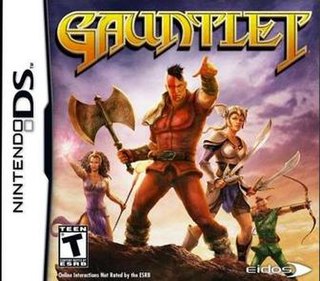
Gauntlet is an unreleased Nintendo DS hack and slash dungeon crawl video game developed by Backbone Entertainment, based on the 1985 arcade game by the same title. The game was originally announced in April 2008, and was scheduled to be released later that year.
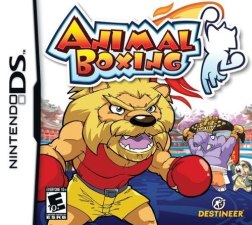
Animal Boxing is a sports video game developed by Spanish studio Akaoni Studio for the Nintendo DS.

Little Red Riding Hood's Zombie BBQ is an action rail shooter game for the Nintendo DS. It was published in North America by Destineer, produced and designed by Gammick Entertainment, and developed by Spanish studio EnjoyUp. The game was released as a DSiWare title in Europe. Like its title suggests, players take the role of Little Red Riding Hood as she destroys zombies with a variety of high-powered firearms.
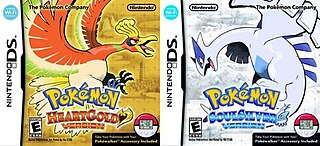
Pokémon HeartGold Version and Pokémon SoulSilver Version are 2009 remakes of the 1999 Game Boy Color role-playing video games Pokémon Gold and Silver, also including features from Pokémon Crystal. The games are part of the fourth generation of the Pokémon video game series, developed by Game Freak and published by The Pokémon Company and Nintendo for the Nintendo DS. In commemoration of the 10th anniversary of Gold and Silver, the games were released in Japan on September 12, 2009, and were later released in other regions during March 2010.

Looney Tunes: Cartoon Conductor is a Nintendo DS game developed by Amaze Entertainment and published by Eidos Interactive.

Sonic Colors is a 2010 platform game published by Sega. It follows Sonic's quest to stop his nemesis Doctor Eggman from enslaving an alien race and taking over the world. The gameplay is similar to prior Sonic games, with players collecting rings and defeating enemies; the camera perspective often switches from third-person to side-scrolling perspectives. The game also introduces Wisps, power-ups the player can use to increase attack power and reach new areas.
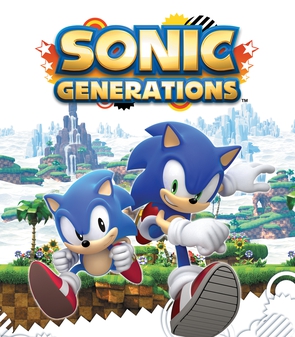
Sonic Generations is a 2011 platform game developed by Sonic Team and published by Sega for the PlayStation 3, Xbox 360, Windows, and Nintendo 3DS. Produced in commemoration of the 20th anniversary of the Sonic the Hedgehog series, the game follows Sonic and his sidekick Tails as they form an alliance with their modern selves. It features two gameplay styles: "Classic", which plays from a side-scrolling perspective like that of the original Sega Genesis Sonic games, and "Modern", 3D levels similar to those in Sonic Unleashed (2008) and Sonic Colors (2010).

Adventure Time: Hey Ice King! Why'd You Steal Our Garbage?!! is a 2012 action-adventure game developed by WayForward Technologies and published by D3 Publisher for the Nintendo DS and Nintendo 3DS. It is based on the animated television series Adventure Time.

Mario Kart 8 is a 2014 kart racing game developed and published by Nintendo for the Wii U. It retains the gameplay of previous games in the Mario Kart series, with players controlling a Mario franchise character in races around tracks. Tracks are themed around locales from the Super Mario platform series and are populated with power-ups that help players gain advantages in races. Different difficulties are selectable prior to a race; harder difficulties make gameplay faster. In the new anti-gravity sequences, players drive on walls and ceilings. Mario Kart 8 contains a variety of single-player and local and online multiplayer games modes, including Grand Prix racing and arena-based battle modes.
Scribblenauts is a series of action puzzle video games primarily developed by independent studio 5th Cell. The series is owned and published by Warner Bros. Interactive Entertainment. The first game in the series was titled Scribblenauts and was first released on September 15, 2009, in North America, exclusively on the Nintendo DS. Since the release of the first game, five other Scribblenauts games have been released, in addition to two compilations and two comic adaptations.




















